The Bateleur – an interview with Dr Rick Watson
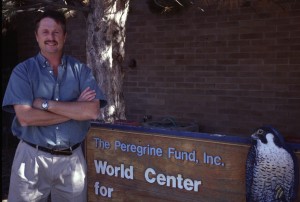
It is my great pleasure to introduce Dr Rick Watson as the author of this next interview on Bateleurs. I first met Rick in South Africa in the early 1980s when we were both embarking on our postgrad studies. At that time Rick was a marine biologist and I was sheep biologist! But we both found our way to working with African birds of prey and I have really enjoyed sharing some of these experiences along the way and sharing the deep concern. Rick embarked on a PhD study of the Bateleur with Wits University. All eagles are challenging to study but the Bateleur especially so, and at the time there was grave concern about the species in southern Africa – we learn from Rick’s interview that this is sadly still the case. It is also one of Africa’s most beautiful and emblematic birds of prey. We need the knowledge that emanated from Rick’s intrepid research in Kruger Park, given in this interview, inorder to conserve this vulnerable species. The Bateleur has the most extraordinary flying abilities covering huge distances at low altitude at speed making it extremely difficult to observe and get to grips with. Through sheer perseverance and a ‘never give up’ attitude, Rick overcame these difficulties and produced and published excellent research on the Bateleur and then went on to tackle desert organisms in Namibia! The quality and quantity of Rick’s work output has been recognised in both academic and conservation communities and Rick has become well established in the world of raptor conservation, now directing 15 projects on three continents and Vice President of The Peregrine Fund. With his easy manner, Rick gets the best out of people and teams and has helped find solutions to some of the most important conservation problems of our time, most notably the catastrophic vulture decline in India. Rick has a ‘can do’ mentality and is not shy of thinking big in order to tackle some of the conservation issues that we face in Africa and globally. This is what is needed. A lot of others like myself have benefited from time in Rick’s company and I hope you enjoy this read and Rick’s account of what is clearly a favourite topic .. Rob Davies
1) What is the current status of the Bateleur in Africa?
The Bateleur has declined throughout its range and is listed as “Near Threatened” on the Global Raptor Information Network (GRIN) site: http://www.globalraptors.org/grin/SpeciesResults.asp?specID=8342. Given its vulnerability to poisoning, and the increased frequency of poisoning throughout Africa, I would predict that this species will be listed as endangered pretty soon. Perhaps it should already be so listed?
2) How has the population developed during the last decades?
When I began my PhD study in 1981, the Bateleur had been declared Endangered in South Africa because the population had declined by an estimated 80% in the previous 30 years. This trend has continued throughout the species’ range in Africa, so that it is now only reliably found in protected areas.
3) Is there a difference between protected and non-protected areas?
Yes, definitely. In South Africa, Bateleurs used to be found throughout the savanna and woodland-savanna habitats. By the early 1980s, it was no longer found in any agricultural/livestock areas, and only found in the larger National Parks. This trend is similar throughout its range, though in those national parks where traditional livestock ranching by indigenous herders is also allowed, the species is disappearing there too because traditional herders are using non-traditional methods (poisons) to kill livestock predators.
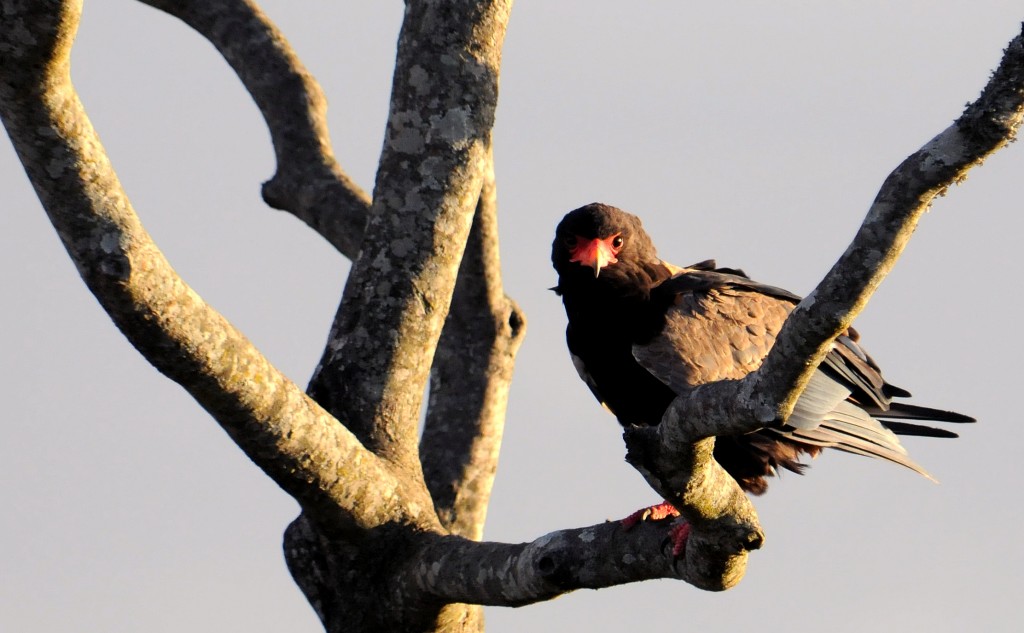
4) What are the main threats to the Bateleur in Africa?
Accidental poisoning by ranchers and livestock herders trying to protect their cattle or sheep from predators like lion, jackal, and feral dogs.
5) What is the most important food for the Bateleur in Africa?
Bateleurs take a wide variety of food, including small mammals, birds, and reptiles, but at least half of their diet is picked up as carrion. I did some experimental feeding trials in which I put out small lumps of meat as bait (usually about 500 grams) and watched the baits to see which diurnal animal found them first. Bateleurs were the first animal to find the bait 94% of the time.
6) Bateleur also take carrion. Does poisoning affect them?
Yes, as described above.
7) What habitat do the birds need? Can they live in habitat altered by humans?
They prefer a fairly open savanna habitat, but also depend on trees in which to nest, so a woodland-savanna is best. Nest sites are usually in larger trees found along a water-course (stream or river, even seasonally flooded streams). They are known to be sensitive to human disturbance, so habitat frequented by people is not suitable.
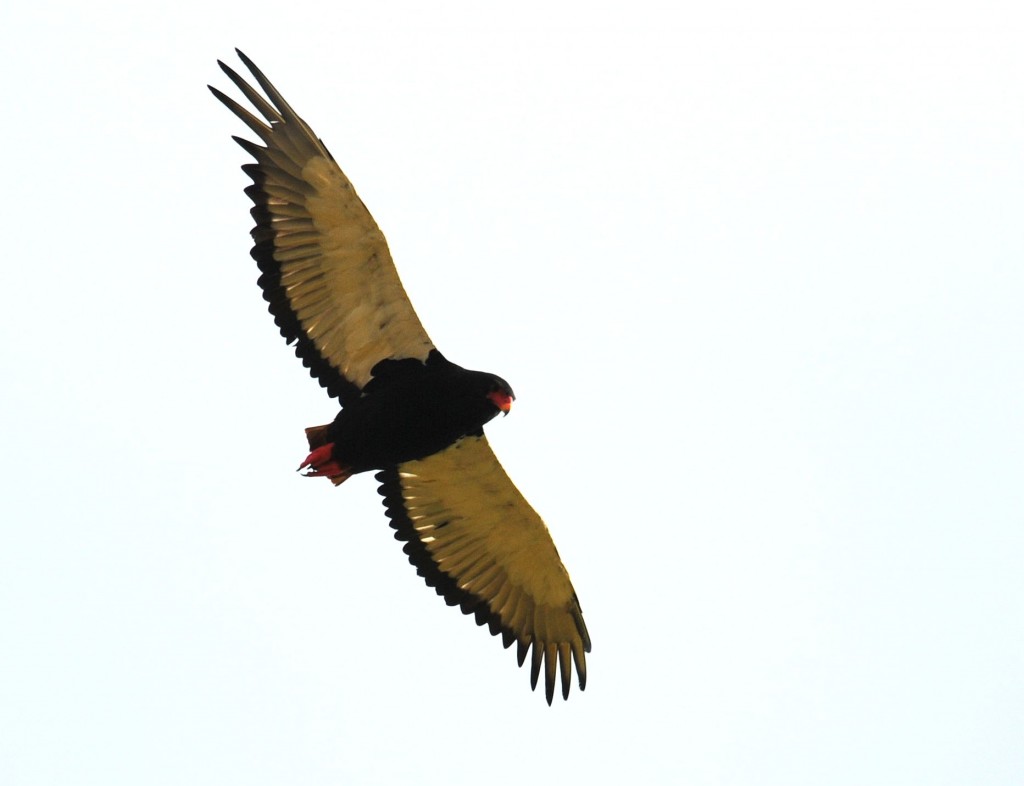
8) How large are the typical home ranges of an established pair?
Home ranges that I measured in Kruger National Park were in the region of 25-35 square kilometers. Mean minimum inter-nest distance gave a better estimate of density at 5.1 km apart, or about 3.1 km pairs per 100 square kilometers.
9) How large should an area be to sustain a healthy population of Bateleurs?
As large as humanly possible….Kruger Park in South Africa sustains about 400-500 pairs and is about 19,200 sq km in area (larger if you include the adjacent trans-boundary parks in Mozambique and Zimbabwe). That’s a good size, provided there are several such areas that are well protected throughout the species range. The problem arises when parks are protected “on paper” but not in reality. If poaching and especially poisoning occurs inside a protected area, then Bateleurs and other avian scavengers are not protected at all and can be wiped out very quickly.
10) What is known about the dispersal and movement of juvenile and immature
birds?
Not much. We do know that during the breeding season, adult birds become very territorial and force young birds out of their territory. The result is that young birds, including floating adults, are pushed out of protected areas, such as the Kruger Park, and into adjacent agricultural areas where they become subject to poisoning events. Large numbers of young Bateleurs were found seasonally in what was the Kalahari Gemsbok National Park in South Africa, bordering Botswana, so perhaps this is where the young Kruger Park Bateleurs went during the breeding season.
11) What is known about the breeding success and survival rates of
Bateleurs?
During my study, Bateleurs raised 0.47 young per pair per year. They only lay one egg, which is curious because that is normally limited to much larger birds. In order to compensate for their low rate of reproduction, Bateleurs must live a long time…in order of 40 years. Like other slow-reproducing, long-lived birds of prey, the population is very sensitive to small declines in adult survival. This is why poisoning is so catastrophic for Bateleurs, even if it happens infrequently.
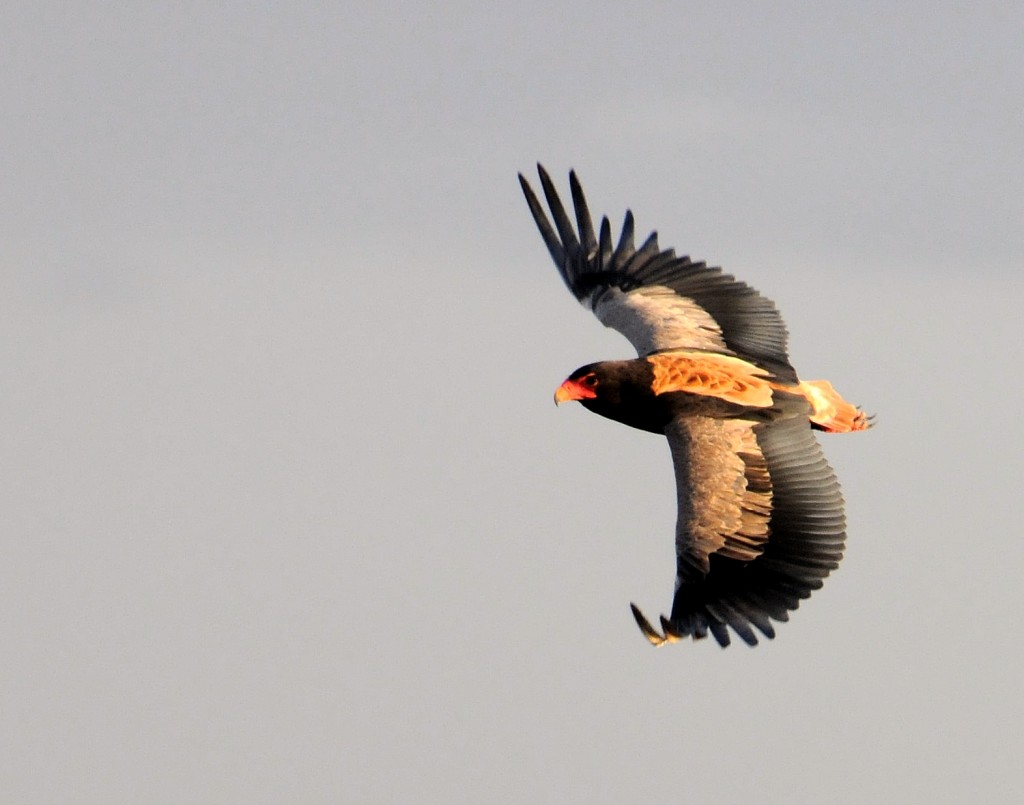
12) How do they interact with other raptors that live in the same area?
For the most part, being small in size, Bateleurs are at the bottom of the pecking order. For example, if a Bateleur finds a carcass to feed on, Tawny Eagles will often be the next species to land…and will push Bateleurs off the carcass. White-headed vultures, hooded, white-backed, and lappet-faced vultures usually are the next to arrive, and also will displace Bateleurs at the carcass. Because they are so vulnerable to larger birds, Bateleurs will often ignore larger carcasses, and only land at smaller ones which they can grab food from before the other birds arrive. If the carcass is small enough to pick-up and carry away, or even swallow whole…then so much the better for Bateleurs.
13) What gaps in our knowledge of the species still exists?
Studies comparable to mine (my thesis is available as a pdf file) in other parts of the species range, especially in different habitat types, would be very useful. The most pressing need is a contemporary measure of the species’ distribution and abundance. I suspect that it is severely limited due to expanding human populations and increasingly frequent and widespread poisoning.
14) Where should research focus during the next years?
A continent-wide survey for Bateleurs would be an excellent choice.
15) What can and must be done to secure the survival of the Bateleur?
Stop predator poisoning completely, and make sure there are large tracts of suitable habitat protected for the species.
16) Are there any conservation projects for the Bateleur?
None that I know of, except for ongoing education in southern Africa where the Endangered Wildlife Trust has been trying for 30 years to persuade ranchers to not poison predators.
17) How do you see the future of the Bateleur?
It is dismal, given the continued human population expansion in Africa.
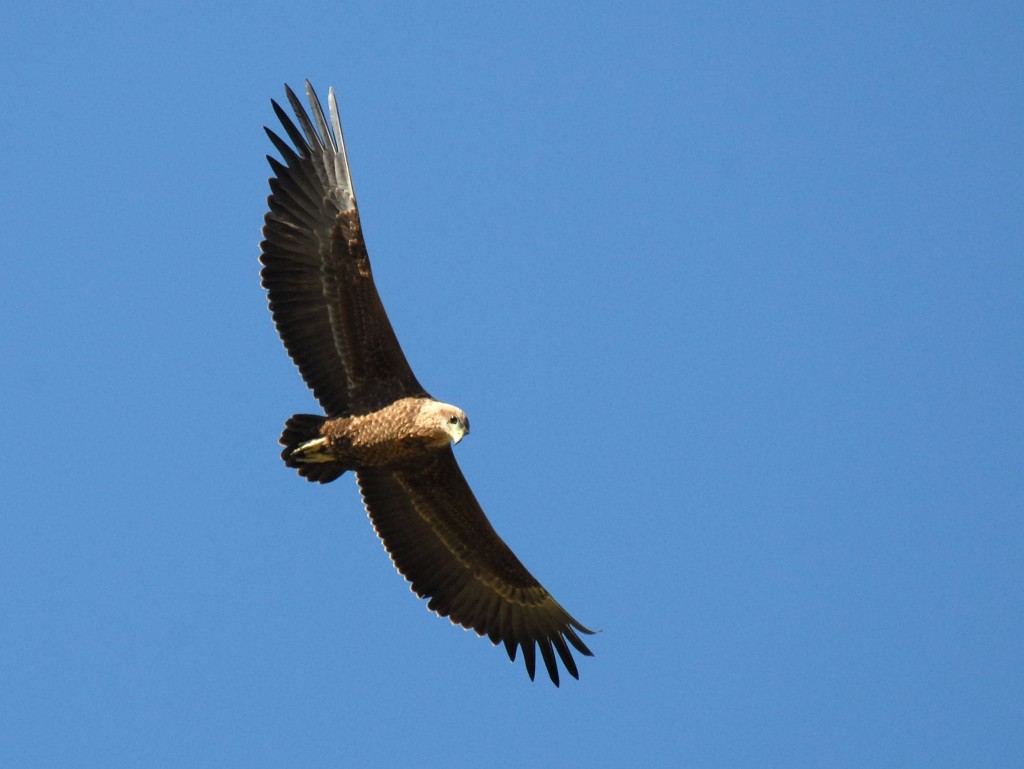
18) What was your most amazing experience with the Bateleur?
There were many, but probably the most amazing was watching a rare, but very spectacular display of intra-specific aggression. What I called the “flip-flip flight” started at about tree-top height as a shallow but very fast dive towards the ground, during which the Bateleur would roll (very fast, so it was a quick flip of the wings) first 90 degrees so that its wings were pointed to sky and ground, then roll back the other way 180 degrees so that its wings were again pointed to sky and ground, about 4 or 5 times in quick succession before pulling up into the sky again, barely missing collision with the ground. The effect of the “flip-flip-flight” was
dramatic, as the bird flashed its white under-wings alternately with its black/grey upper wings. It was a display meant to be seen!! Usually the display was followed or preceded by calling while in flight, a raucous “kaaw” with head arched backward (bill pointed skyward) and feet dangling down. Ultimately, the intruder would be so intimidated by this display that it was chased from the territory.
Other comments:
My Bateleur (and other species) publications are listed on the GRIN website at http://www.globalraptors.org/grin/ResearcherResults.asp?lresID=137
And I am happy to forward pdf files of any that people want, including my thesis published in 1986.
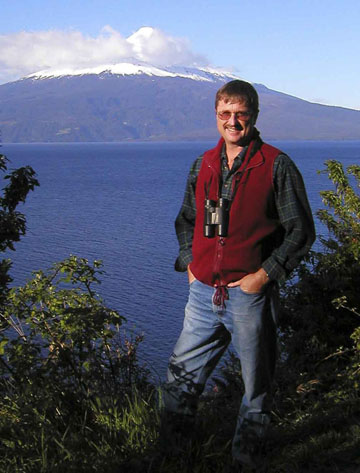 Rick graduated from the University of Bangor in North Wales with a Bachelors degree in Marine Zoology, later graduated with a Ph.D. in raptor ecology from the University of the Witwatersrand, South Africa. Conducted Post-doctoral research on ecophysiology of Thysanura in the Namib Desert, Namibia, followed by a variety of temporary field research positions in the United States, studying Roseate Terns to Spotted Owls, as well as two semesters teaching wildlife management in Kenya. Rick joined The Peregrine Fund in 1990 to start up a new conservation project in Madagascar, and subsequently started a new project in Kenya and Ethiopia, and helped support others in Zimbabwe, South Africa and Ivory Coast. Rick was promoted in 1998 to direct all The Peregrine Fund’s conservation work internationally. He currently directs 15 projects in as many countries on three continents, including new efforts focused on the Asian Vulture Crisis (Pakistan, India and Nepal) and development of a regional program to conserve raptors in the Neotropics. Rick was named Vice President of The Peregrine Fund in May 2007.
Rick graduated from the University of Bangor in North Wales with a Bachelors degree in Marine Zoology, later graduated with a Ph.D. in raptor ecology from the University of the Witwatersrand, South Africa. Conducted Post-doctoral research on ecophysiology of Thysanura in the Namib Desert, Namibia, followed by a variety of temporary field research positions in the United States, studying Roseate Terns to Spotted Owls, as well as two semesters teaching wildlife management in Kenya. Rick joined The Peregrine Fund in 1990 to start up a new conservation project in Madagascar, and subsequently started a new project in Kenya and Ethiopia, and helped support others in Zimbabwe, South Africa and Ivory Coast. Rick was promoted in 1998 to direct all The Peregrine Fund’s conservation work internationally. He currently directs 15 projects in as many countries on three continents, including new efforts focused on the Asian Vulture Crisis (Pakistan, India and Nepal) and development of a regional program to conserve raptors in the Neotropics. Rick was named Vice President of The Peregrine Fund in May 2007.

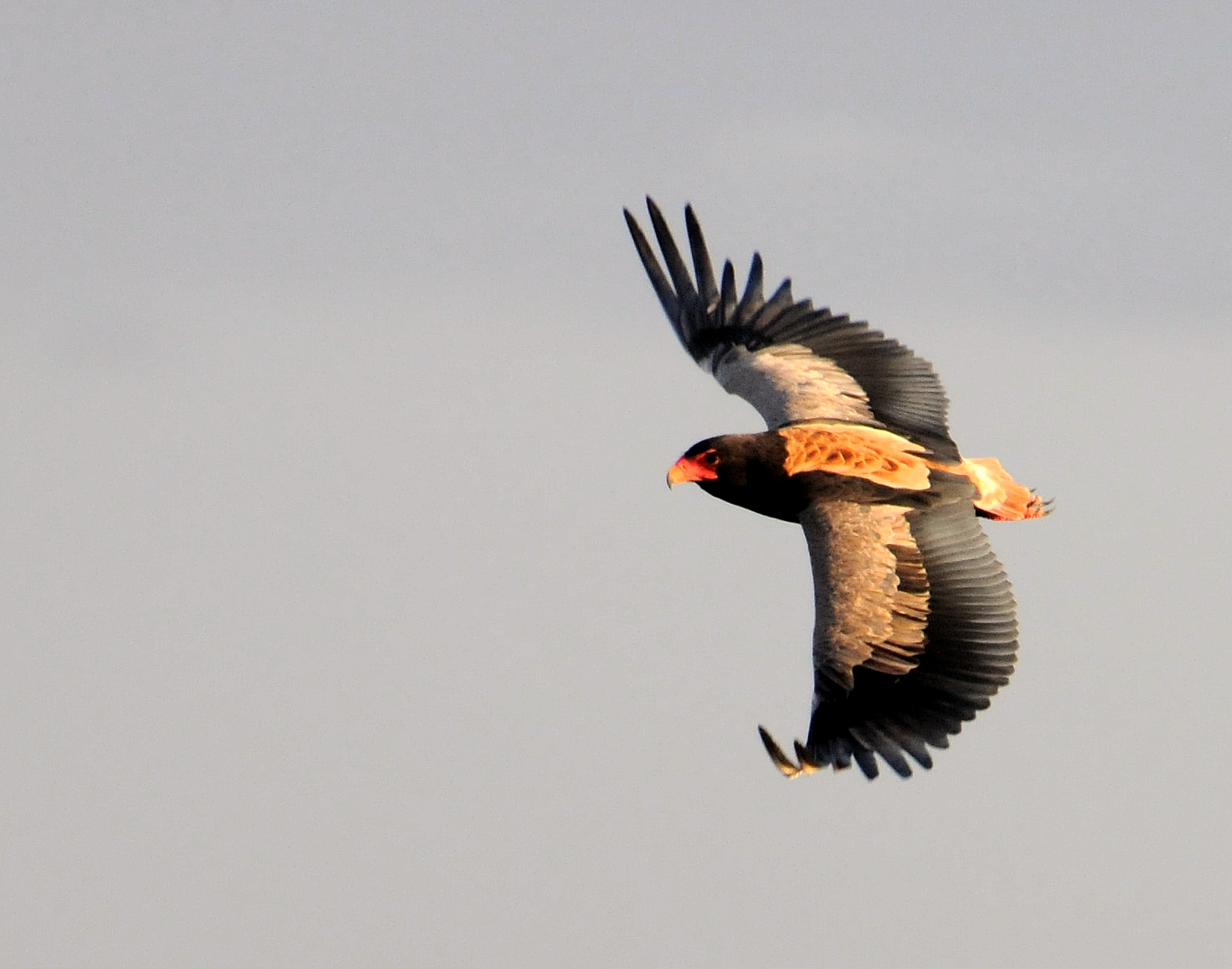

Hi Rick,
Good to read about you and your work over the past 25 years, and to recall your time working on Bateleurs. Greetings from Namibia. Chris.
We saw a Bateleur flying quite low and circling in Ithala Game Reserve near Vryheid, inland of Pongola River in February 2010. It was spectacular and we hope you can ‘save’ this stunning eagle by your excellent research.
Hi there. Would appreciate your comments on following. We spend a lot of time in the Matobo hills Zim. Have seen many Bateleur eagles there with my sons in the 90’s. Last twelve trips, some of which have been 10 days in duration, NOT ONE sighting. Do you know anything about drop in population etc in this area. Best regards Mac
Mark MacGregor:
My guess is that the disappearance of Bateleurs from the Matobo Hills would be due to poisoning in the area. It would be helpful to find out if farmers are using poison in meat baits to kill jackals or feral dogs or other predators.
I’m very concern to do presentation about bateleur survival and how to sercure the endangered how we can loose these birds in our enviroment.
Rick–
You’ve accomplished a lot for our resources. Keep up the good work.
Jeff